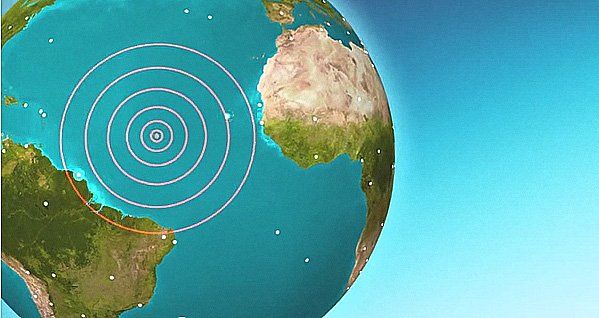A new push for the Comprehensive Nuclear Test Ban Treaty?
By Hugh Gusterson | October 29, 2015

“Realists” represent arms control treaties as deals—negotiated accommodations of interests. But treaties also implicitly tell stories. They embody narratives of how we can make the world a better place. These narratives become compelling if they seem simultaneously hopeful and realistic.
The SALT I Treaty of 1972 between the United States and the Soviet Union did not just enact restrictions on the number of missile launchers the two superpowers could field. It also ushered in the era of détente by embodying in its enactment the belief that Washington and Moscow could increase geopolitical stability by regulating their competition. It implicitly established a new frame of possibility in the superpower relationship—not amity, but codified competition.
On October 21, the US Energy Department laid out a new narrative frame about the end of nuclear testing in a half-day symposium in Washington DC. The United States carried out its last nuclear weapon test in 1992, having conducted more than one thousand at that point. After a debate over whether to do a dozen or so last tests to resolve questions about safety and reliability, and whether to push for a complete ban or one that would allow small tests, the Clinton Administration decided to forego the extra tests and insist on a full ban. In 1996, President Clinton signed the resulting Comprehensive Nuclear Test Ban Treaty (CTBT), but the US Senate has yet to ratify it.
The ostensible goal of the Energy Department symposium last week was to assess the US nuclear weapons labs’ stockpile stewardship program. Now twenty years old, the stockpile stewardship program is designed to maintain the reliability of US nuclear weapons in the absence of testing. It uses supercomputers, lasers, and other experimental capabilities to model nuclear weapons performance, maintain an aging arsenal, and train a new generation of weapons scientists. The event in Washington, ironically held on “Back to the Future” day, culminated with a speech by Secretary of State John Kerry in which he announced that he wants to “re-open and re-energize the conversation” about ratifying the CTBT. Conceding that the earlier drive to ratify the treaty in 1999 ended in a humiliating defeat for the Clinton Administration, he said that “the factors that led some senators to oppose the treaty have changed, so [senators’] choices should change too.”
The event featured some of the leading figures in the world of government nuclear weapons science: Energy Secretary Ernest Moniz; head of the NNSA Frank Klotz; NNSA Principal Deputy Administrator Madelyn Creedon; directors of the nuclear weapons labs at the Lawrence Livermore, Los Alamos, and Sandia National Laboratories; and former Deputy Energy Secretary Charles Curtis. The speakers converged with remarkable unanimity in creating a compelling narrative frame in favor of ratifying the test ban treaty. This narrative frame was strikingly revisionist. It had three key elements: taking the CTBT away from the Left; making stockpile stewardship sound like a technological wonder akin to space travel; and recasting the Senate’s rejection of the treaty in 1999.
First, the speakers presented the US decision to stop nuclear testing not as many saw it at the time, as a victory for arms-control advocates and the left wing of the Democratic Party, but as a clever way of advancing US national security interests by freezing nuclear weapons development at a moment when the United States had the most advanced designs. Curtis told the audience that Russian nuclear weapons scientists he met in 1995 saw the effort to negotiate the test ban treaty as “an adversarial act on the part of the United States,” and added, “I’m sure the Chinese had similar discussions.” There was no hint from the stage that the end of nuclear testing might have weakened the US nuclear stockpile, or that it might have been a concession to a concerted campaign by non-nuclear countries in the lead-up to the 1995 Nuclear Non-Proliferation Treaty review conference.
Second, channeling the rhetoric of the Apollo space program, speakers cast stockpile stewardship not as a makeshift second-best to actual nuclear testing, which is how many at the weapons labs saw it twenty years ago, but as an extraordinary triumph of American determination, innovation, and scientific know-how. NNSA head Klotz described stockpile stewardship as a “paradigm shift,” “a bold journey,” and doubling down on the b-word, “a bold experiment that succeeded.” The approach “has been extraordinarily successful,” he said, adding that “today we have a more detailed understanding of how a nuclear weapon works than was possible under nuclear testing.” Energy Secretary Moniz described the challenge of producing new supercomputers that had the power to simulate nuclear tests and creating facilities to explore “parameter spaces of temperature and pressure that had never been brought to the lab.” He said that ”there was nothing off the shelf about this program,” and that “the science and technology had to be invented to go into entirely new domains.” The speakers’ comments focused largely on computing, where the weapons labs have had their greatest successes. One would never have known that the cornerstone of stockpile stewardship, Lawrence Livermore’s National Ignition Facility, came in more than 300 percent over budget, five years behind schedule, and has still failed to achieve its promised goal of “ignition” (the point where more energy comes out of a fusion reaction than goes in).
Third, the speakers recast the Senate’s 1999 rejection of the CTBT by 51 to 48 votes as an early misfire rather than an enduring warning to anyone who thought ratification was possible. At the time, many supporters of the treaty attributed its rejection in part to perfidiously lukewarm Senate testimony by the lab directors, especially Sandia’s Paul Robinson, and to the irremediable closed-mindedness of Republican senators. According to the new narrative, though, the senators may have been prudent, refusing to lock the door on nuclear testing before stockpile stewardship and the CTBT verification system had a chance to prove themselves. Energy Secretary Moniz said that in 1999, “the lab directors, while expecting success [for the stockpile stewardship program], took the reasonable position that it was not guaranteed.” Brian McKeon, a former Senate staffer who is now a senior official at the Defense Department, said, “it was a quite reasonable position that those who voted against the treaty took.”
But that was then. Frank Miller, a Defense Department official in the 1990s, said at the symposium that the success of the stockpile stewardship program “has taken off the table whether we can maintain a safe, secure, and reliable stockpile” without testing. John Kerry said that twenty years of work on stockpile stewardship and on the construction of a technical system to verify treaty compliance have finally made the treaty ripe for reconsideration. “We’ve checked the two most important boxes, folks.”
The Energy Department’s new narrative is not untrue but, like all narratives, it is partial. I was particularly struck by the complete erasure of the person who did more than any other US official to end nuclear testing and create the stockpile stewardship program: Hazel O’Leary, President Clinton’s first Energy Secretary, went unmentioned. She was never popular—in fact, it might be fairer to say that she was much-hated—at the weapons labs, and she was never part of the clubby men’s world of nuclear weapons science and policy in Washington, but nothing would have happened without her. She faced down the secretary of state, defense secretary, and national security advisor when they wanted to resume nuclear testing in 1993, and used outside experts to pick holes in the lab directors’ case for more nuclear tests and force them to trade testing for stewardship. Now she’s disappeared down Washington’s memory hole.
The October 21 event was advertised as a celebratory backward look at twenty years of stockpile stewardship but, by the end, it looked like the rollout of a new push for CTBT ratification. If that is the case, the new narrative is surely well-optimized for maximum effectiveness in today’s Washington environment. But, if the CTBT is ever ratified, let’s make sure that full credit is given to everyone who deserves it. As well as the men and women of the weapons labs and the Energy Department, that includes Hazel O’Leary; members of Congress such as the late Oregon Republican Senator Mark Hatfield, the late Nebraska Democratic Senator James Exon, and former Oregon Democratic Representative Mike Kopetski, who toiled indefatigably on this issue for many years; and generations of disarmament activists who have pushed for an end to nuclear testing since the marches organized by the Committee for a SANE Nuclear Policy in the 1950s. Without their efforts, the US national security apparatus would never have risen to the challenge.
Together, we make the world safer.
The Bulletin elevates expert voices above the noise. But as an independent nonprofit organization, our operations depend on the support of readers like you. Help us continue to deliver quality journalism that holds leaders accountable. Your support of our work at any level is important. In return, we promise our coverage will be understandable, influential, vigilant, solution-oriented, and fair-minded. Together we can make a difference.
Topics: Columnists, Nuclear Weapons















